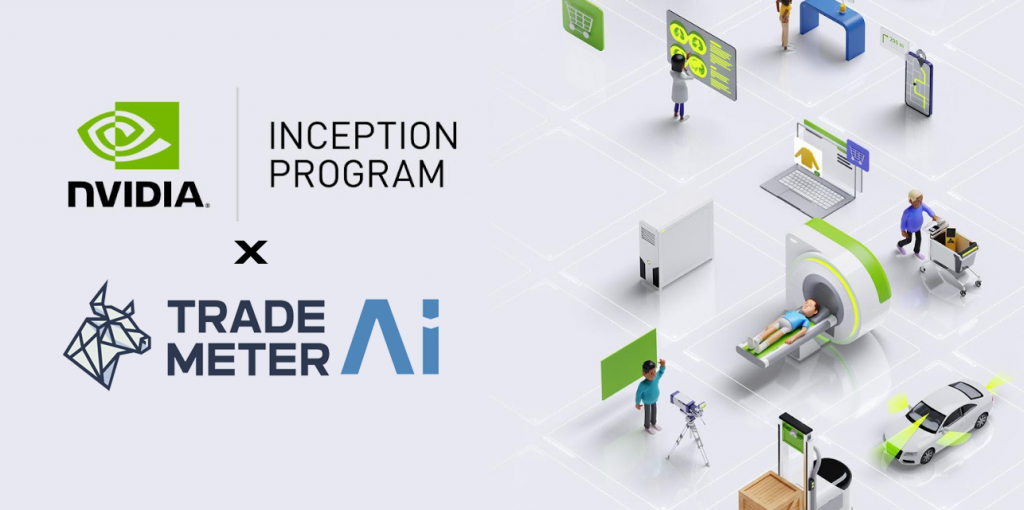20 Good Facts For Deciding On Trader Ai Intal Websites
20 Good Facts For Deciding On Trader Ai Intal Websites
Blog Article
Top 10 Tips On Assessing The Data Quality And Sources Ai Platform For Predicting And Analyzing Trades
It is essential to evaluate the accuracy of the data and the sources utilized by AI-driven trading platforms as well as platforms for stock prediction for accurate and reliable data. Poor data quality may result in inaccurate predictions and financial losses. It could also lead to mistrust for the platform. Here are 10 of the top ways to assess data sources and quality.
1. Verify the source of data
Verify the source of the information. Verify that the platform uses reliable, well-known sources of data (e.g. Bloomberg Reuters Morningstar or stock exchanges like NYSE, NASDAQ).
Transparency - The platform must be open about the sources of its data and should regularly update them.
Beware of dependencies on a single source: A reliable platforms often aggregate data from multiple sources to minimize mistakes and bias.
2. Check Data Freshness
Data that is delayed and real-time Choose if the platform provides real time data or delayed. Real-time data is crucial for active trading. Data that is delayed can be sufficient to provide long-term analysis.
Make sure you are aware of the frequency at which you update data (e.g. hourly minutes by minutes or even daily).
Accuracy of historical data Verify that the data is uniform and free of any anomalies or gaps.
3. Evaluate Data Completeness
Find out if there is missing or incorrect information.
Coverage - Make sure that the platform you select covers all stocks, indices and other markets that are relevant to trading strategies.
Corporate actions: Ensure that the platform is able to take into account stock splits and dividends. Also, verify if it accounts for mergers.
4. Test Data Accuracy
Cross-verify your information: Verify the platform's data against other trusted sources.
Error detection: Look out for incorrect pricing, mismatched financial metrics or outliers.
Backtesting: You can use the historical data to evaluate trading strategies. Check if they match your expectations.
5. Consider the Data Granularity
In terms of level of detail, make sure the platform is able to provide precise information, like prices for intraday volumes, bidding-asking spreads and order book depth.
Financial metrics: Verify that the platform provides detailed financial statements, including statements of income, balance sheets and cash flow as well as crucial ratios like P/E, ROE, and P/B. ).
6. Clean up and processing of data
Normalization of data: To keep consistency, ensure the platform normalizes every data (e.g. by adjusting dividends and splits).
Outlier handling: See the way in which the platform handles anomalies or outliers within the data.
Data imputation is not working: Find out whether the platform is using solid methods to fill in the missing data points.
7. Evaluation of Data Consistency
All data should be aligned with the same timezone. This will eliminate any discrepancies.
Format consistency - Check to see whether the data is presented in the same format (e.g. units, currency).
Cross-market compatibility: Ensure whether data from different exchanges or markets are coordinated.
8. Determine the relevancy of data
Relevance to your trading strategy The data you are using is compatible with the style you prefer to use in trading (e.g. technical analysis quantitative modeling, fundamental analysis).
Feature Selection: Determine whether the platform offers useful features, such as economic indicators, sentiment analysis, and news data, which will improve the accuracy of forecasts.
Examine Data Security Integrity
Data encryption: Ensure that your platform is using encryption to safeguard information during storage and transmission.
Tamper-proofing: Verify that the data isn't altered or altered by the platform.
Conformity: Determine whether the platform meets data protection regulations (e.g., GDPR, CCPPA, etc.).).
10. The Transparency Model of AI Platform is Tested
Explainability: The platform will provide insights into the way AI models use data to make predictions.
Bias detection - Examine to determine if your system is actively monitoring data and models for biases.
Performance metrics: Assess the quality of the platform by evaluating its history, performance metrics, and recall metrics (e.g. precision, accuracy).
Bonus Tips
Reputation and feedback from users Review user reviews and feedback to evaluate the credibility of the platform.
Trial period: Try the platform for free to see how it works and what features are offered before committing.
Customer Support: Make sure that the platform offers an efficient support system for customers to address issues related to data.
Following these tips will enable you to assess the quality, sources, and accuracy of AI-based stock prediction tools. Check out the top rated look what I found about ai trader for more advice including ai stock picks, trading ai, stock analysis app, best ai etf, ai investing app, trader ai app, ai stock, free ai tool for stock market india, ai copyright trading bot, trade ai and more.
Top 10 Tips On Assessing Regulatory Compliance With Ai Stock Predicting/Analyzing Trading Platforms
The regulatory compliance aspect plays an important role in evaluating AI platforms to predict stock prices and analyze. Compliance ensures that the platform works within legal frameworks, protects the privacy of users, and conforms to the financial laws, which reduces the risk of legal issues or financial penalties. Here are the 10 best tips for evaluating the regulatory compliance of such platforms:
1. Verify registration and licensing
Regulatory Authorities: Make sure that the platform is registered with the appropriate regulatory authorities (e.g. SEC US, FCA UK and ASIC Australia) and holds an authorization.
Verify the broker partnership If your platform has a partnership with brokers or brokers, be sure these brokers are licensed and regulated.
Public records: Go to the website of the regulator to find the platform's registration status as well as any previous violations.
2. Look for data privacy Compliance
GDPR: If you are operating or serving users within the EU Make sure your platform is in compliance to the General Data Protection Regulation.
CCPA : California Consumer Privacy Act (CCPA) conformity should be checked by the users.
Data handling policies: Review the privacy policies of the platform to determine the ways in which user data is gathered, stored, and transferred.
3. Evaluate Anti-Money Laundering (AML) measures
AML policies: Make sure that your platform is equipped with a robust AML policy to identify and stop any form of money laundering.
KYC procedures. See the platform you use follows Know Your Customer processes for confirming user identity.
Examine the platform's monitoring of transactions. Does it track transactions and report suspicious activity to relevant authorities?
4. Check for Compliance With Trading Regulations
Market manipulation: Ensure the platform has safeguards to prevent market manipulation, such as spoofing or wash trading.
Order types. Examine whether your platform meets the regulations for order types.
Best execution : Make sure that the platform is using top execution techniques to complete trades at a competitive price.
5. Cybersecurity Assessment
Data encryption: Verify that the platform safeguards user data both in transit and when it is in rest by encrypting it.
Incident response - Verify the system's plans to take action in the event of cyberattacks or data breaches.
Certifications: Find out if a platform is accredited to be secure (e.g. ISO 27001, SOC 2)
6. Examine Transparency and disclosure
Fee disclosure: Ensure the platform is clear about all fees, including any hidden or additional charges.
Risk disclosure: Check if there are clear disclosures of risks, specifically for high-risk or leveraged trading strategies.
Performance reporting: Verify that the platform provides honest and precise reports on its AI models.
7. Make sure you're in compliance with International Regulations
Cross-border trading: If your trading involves international trade, you should ensure that your platform is compliant with the requirements of each regulatory jurisdiction.
Tax reporting - Check the platform's tools and reports to aid users in complying with tax regulations.
Conformity with sanctions: Ensure that the platform adheres international sanctions and is not able to trade with prohibited entities or countries.
8. Examine the records-keeping and audit trail
Transaction records: Verify that the platform maintains detailed records for regulatory purposes and audit.
Logs of activity for users (logs) You can check to determine if the platform is tracking the user's activities, including logins and trades. Also, verify if account settings are modified.
Audit readiness: Check if the platform has the necessary documents and logs in the event an audit by a regulatory agency.
9. Evaluate Compliance with AI-Specific Regulations
Algorithmic trading regulations: If you are using a platform that supports algorithmic trading, ensure it is compatible with relevant regulatory frameworks like MiFID II or Reg SCI, in Europe and the U.S.
Fairness and Bias: Make sure that the platform is monitoring and reduces biases in its AI models in order to ensure fair trading.
Explainability: Certain regulations require that AI platforms provide explanations to AI-driven predictions or choices.
Review User Feedback & the Regulatory History
User feedback: Review reviews from users to determine the credibility of the platform in terms of compliance with the law.
The history of regulatory compliance: Find out whether the platform has a history of regulatory violations such as fines, penalties, or sanctions.
Third-party Audits: Make sure that the platform has been subjected to third-party audits to ensure that the platform is conforming to all laws and regulations.
Bonus Tips
Legal consultation: Discuss with a legal expert about the conformity of the platform to applicable rules.
Trial period: Try the platform for free, or try the demo to test out its compliance features as well as the documentation.
Customer support: Make sure the platform has support available in case of questions or problems that concern compliance.
These suggestions will assist you to assess the compliance of AI trading platforms which can predict or analyze the prices of stocks. In this way you'll be able select a platform that operates within legal frameworks, and safeguards you. Compliance not only lowers the risk of legal liability, but also improves confidence in the service of a platform. Check out the most popular our site for ai trading platform for blog info including ai stock picks, copyright ai trading bot, best ai for trading, ai trade, ai stock trading bot free, trader ai intal, ai trader, copyright ai trading bot, ai stock trading, ai stock price prediction and more.